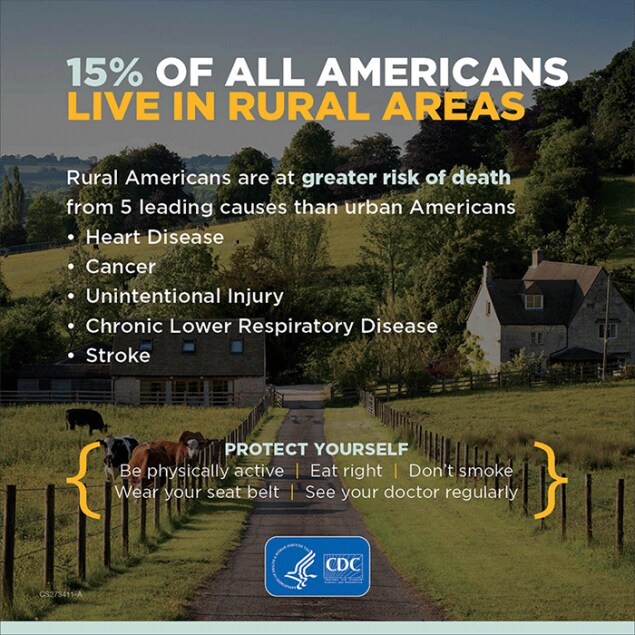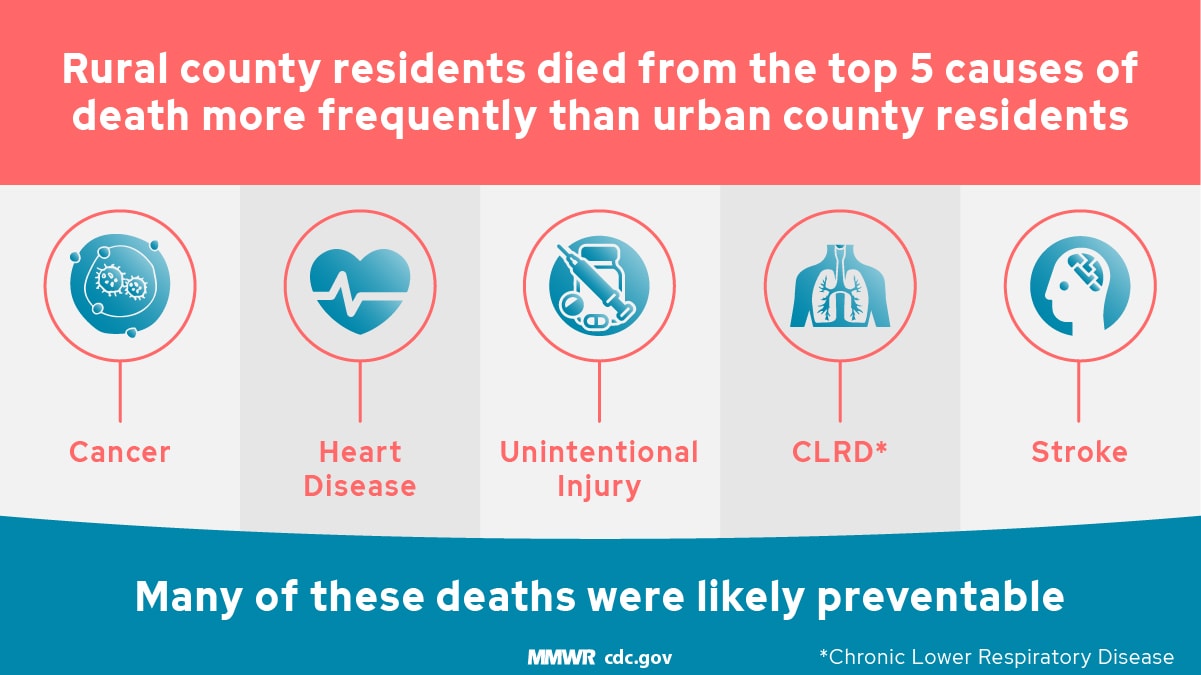
Leading Causes of Death in Rural America
Updated April 21, 2023
In a striking example of the health gap between rural and urban American, data from CDC demonstrates that Americans living in rural areas are more likely to die from five leading causes than their urban counterparts. In 2014, many deaths among rural Americans were potentially preventable, including 25,000 from heart disease, 19,000 from cancer, 12,000 from unintentional injuries, 11,000 from chronic lower respiratory disease, and 4,000 from stroke. The percentages of deaths that were potentially preventable were higher in rural areas than in urban areas. Some 46 million Americans — 15 percent of the U.S. population — currently live in rural areas. Several demographic, environmental, economic, and social factors might put rural residents at higher risk of death from these public health conditions. Residents of rural areas in the United States tend to be older and sicker than their urban counterparts. They have higher rates of cigarette smoking, high blood pressure, and obesity. Rural residents report less leisure-time physical activity and lower seatbelt use than their urban counterparts. They also have higher rates of poverty, less access to healthcare, and are less likely to have health insurance.
CDC MMWR Report
CDC MMWR Commentary
A Data Visualization Dashboard


